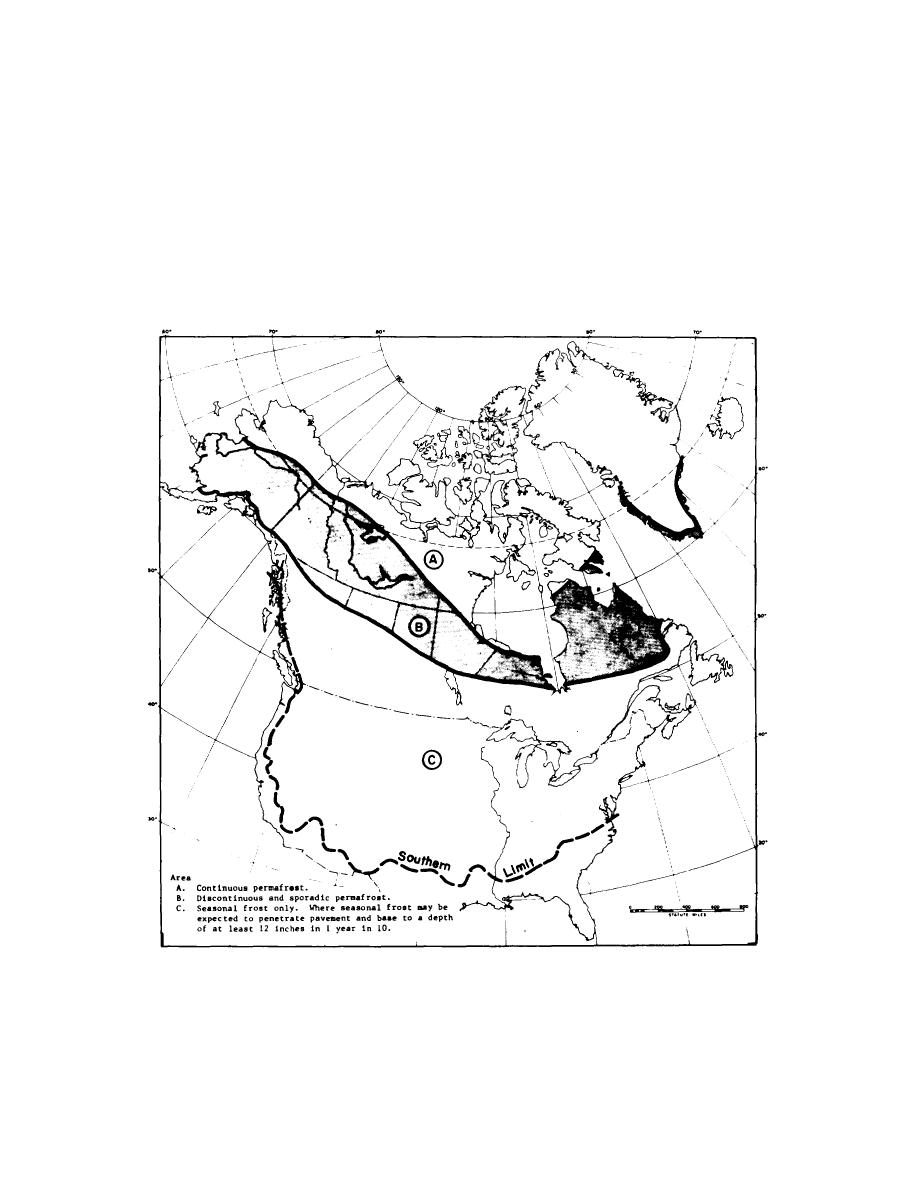
TM 5-818-1 / AFM 88-3, Chap. 7
tinuous source of heat is available, thaw will in most
natural and manufactured construction materials
cases eventually occur.
experience significant linear and volumetric changes and
(2) The more intense the winter cooling of
may fracture with changes in temperature. Shrinkage
the frozen layer in the annual frost zone and the more
cracking of flexible pavements is experienced in all cold
rapid the rate of frost heave, the greater the intensity of
regions. In arctic areas, patterned ground is widespread,
uplift forces in piles and foundation walls. The lower the
with vertical ice wedges formed in the polygon
temperature of permafrost, the higher the bearing
boundaries. When underground pipes, power cables, or
capacity and adfreeze strength that can be developed,
foundation elements cross shrinkage cracks, rupture
the lower the creep deformation rate under footings and
may occur during winter contraction. During summer
in tunnels and shafts, and the faster the freeze-back of
and fall, expansion of the warming ground may cause
slurried piles. Dynamic response characteristics of
substantial horizontal forces if the cracks have become
foundations are also a function of temperature. Both
filled with soil or ice.
U. S. Army Corps of Engineers
Figure 18-1. Frost and permafrost in North America.
18-2


 Previous Page
Previous Page
